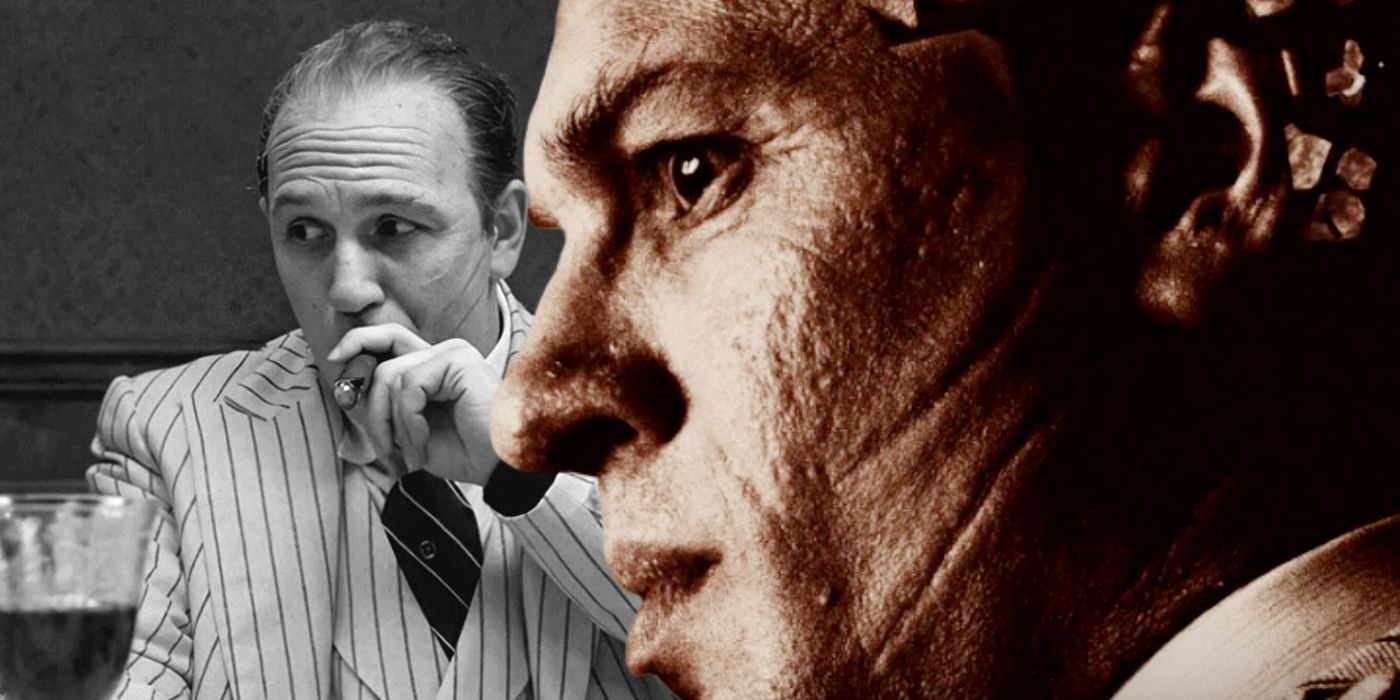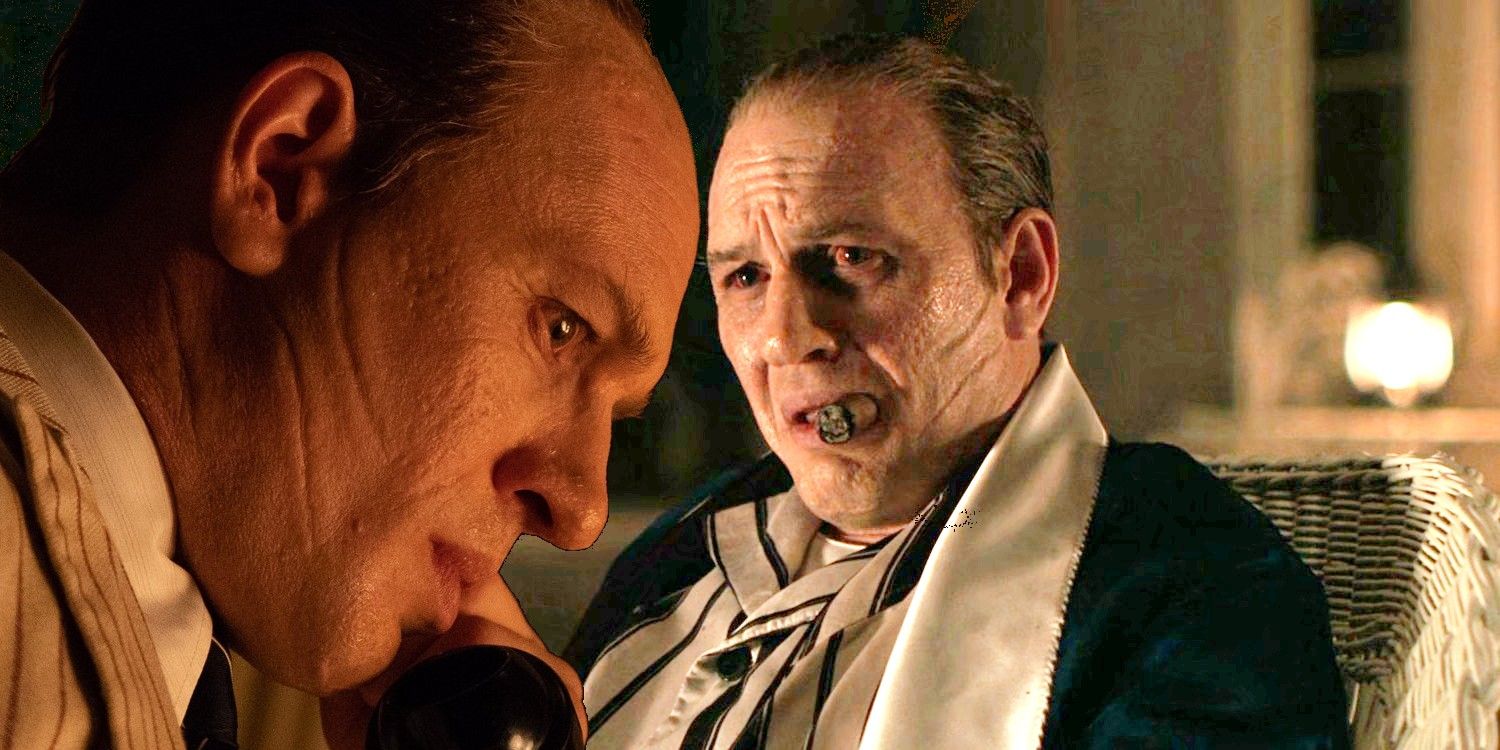The biopic Capone is a gruesome story about the final years of infamous crime boss Al Capone’s life, however, it leaves out many details of his younger self, including how the famous gangster got the scars that led to his "Scarface" nickname. Written and directed by Josh Trank, the film stars Tom Hardy as an ailing Al Capone, suffering from dementia as his descent into darkness is explored. While most of the film takes place after Capone’s release from Alcatraz and centers around his diminishing health while holed up in his Miami Beach mansion, Capone uses flashbacks to recollect key life events to explain its subject's past.
While still a teenager, Al Capone was recruited into the Five Points Gang, a predominantly Italian-American outfit, by Frankie Yale. Yale had been a criminal businessman selling ice, where he eventually made enough money to open a bar in Coney Island called the Harvard Inn. Capone was hired as a bouncer, and the Harvard Inn became lucrative for the group due to its strategic placement near water, giving it access to serve liquor during Prohibition. As a bouncer, Capone handled situations well and was noticed by Yale, who would later bring him into his inner circle.
On a night during an incredible heatwave, a new customer named Frank Galluccio arrived to the bar with his girlfriend and younger sister, Lena. An 18-year-old Al Capone was enthralled with Lena and after a couple offers to walk the beach, Lena declined and told her brother of the situation. As they began to leave, Capone jokingly yelled that Lena had a nice figure and Galluccio took it as an insult. Severely unmatched against the stocky, heavier Capone, Galluccio pulled a knife and slashed him in the face and upper neck before sprinting from the bar. Capone would have to get a few dozen stitches, and forever be seen with the distinctive scars left on his face.
Al Capone’s famous scars are a signature feature of the crime lord and Hardy completely transformed with prosthetics to get it right. Due to the three scars on his face, the media named him “Scarface”, and it bothered Capone so much that he would often powder his face and manipulate photos, so they were always taken from his right side. The history of how he got his scars haunted Capone, but made him a standout figure along with his criminal enterprise.
Because of his shame over the scars, Capone would also claim he got them during World War I while fighting in France, although he never served actually served in combat. His pride was clearly hurt given that his injuries were from a much smaller man who cut him up for being rude to his sister, as opposed to something ostensibly more honorable like an injury sustained in war. “Scarface” was never a name he embraced and while Capone captures the final years of torment in his life prior to Al Capone's death, those scars are a stark reminder of the rise to his criminal path.


